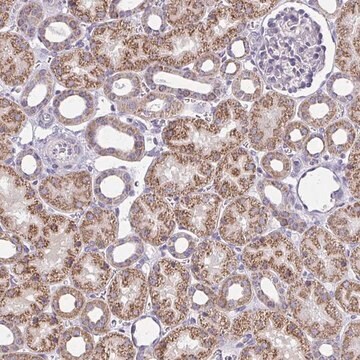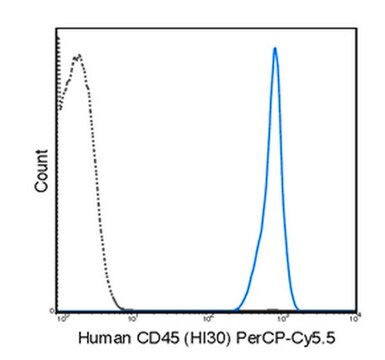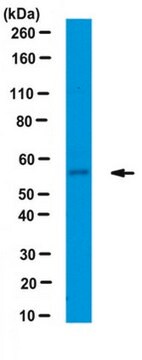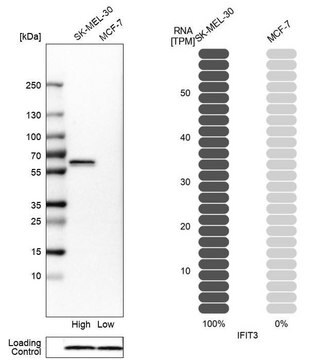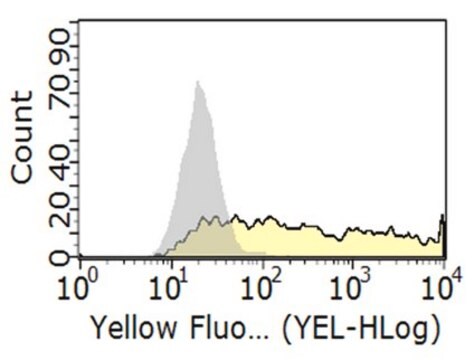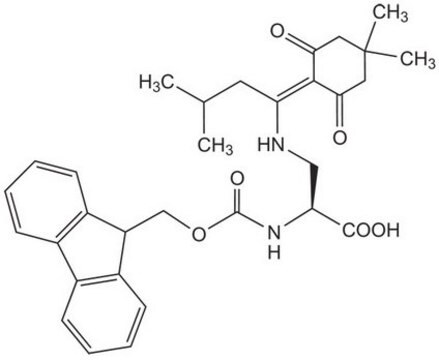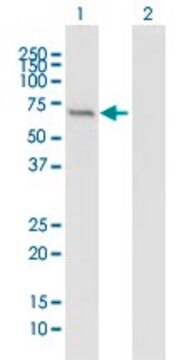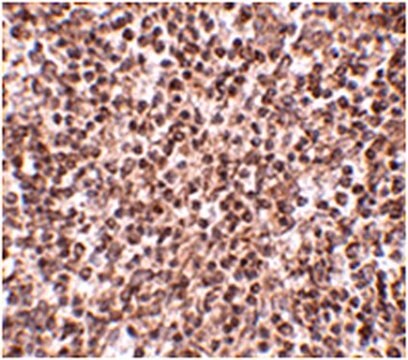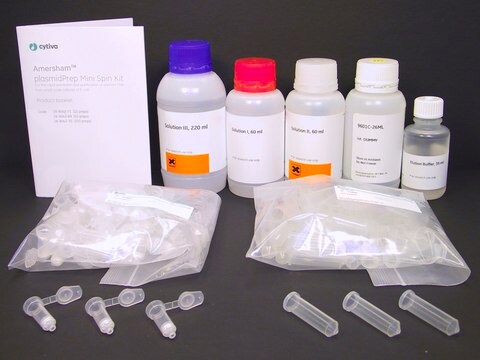ABF1048
Anti-IFIT3 Antibody
serum, from rabbit
Synonym(s):
Interferon-induced protein with tetratricopeptide repeats 3, IFIT-3, Glucocorticoid-attenuated response gene 49 protein, GARG-49, P49, IRG2, IFIT3
About This Item
Recommended Products
biological source
rabbit
Quality Level
antibody form
serum
antibody product type
primary antibodies
clone
polyclonal
species reactivity
mouse, human
technique(s)
flow cytometry: suitable
immunocytochemistry: suitable
immunohistochemistry: suitable (paraffin)
immunoprecipitation (IP): suitable
western blot: suitable
NCBI accession no.
UniProt accession no.
shipped in
wet ice
target post-translational modification
unmodified
Gene Information
human ... IFIT3(3437)
General description
Specificity
Immunogen
Application
Inflammation & Immunology
Immunoglobulins & Immunology
Western Blotting Analysis: A representative lot detected Ifit3/ISG49 induction in RAW264.7 and wild-type, but not IRF3 or Stat1 knockout, MEFs upon Sendai virus/SeV infection, dsRNA or INF-beta stimulation in cultures, as well as in liver/lung/spleen/colon tissues from mice after dsRNA or INF-alpha i.v. injection (Fensterl, V., et al. (2008). J Virol. 82(22):11045-11053).
Western Blotting Analysis: A representative lot detected differential Ifit3/ISG49 inductions between murine MPC podocytes and primary murine glomerular mesangial cells in response to Sendai virus (SeV), encephalomyocarditis virus (EMCV), and vesicular stomatitis virus (VSV) infection (Fensterl, V., et al. (2008). J Virol. 82(22):11045-11053).
Western Blotting Analysis: A representative lot selectively detected exogenously expressed murine Ifit3/ISG49 and human IFIT3/ISG60, but not murine Ifit1/ISG56 or Ifit2/ISG54, in transfected HT1080 cells (Fensterl, V., et al. (2008). J Virol. 82(22):11045-11053).
Western Blotting Analysis: A representative lot detected Ifit3/ISG49 induction in IFN-alpha-stimulated primary murine spleen B cells and in IFN-beta-stimulated MEFs (Fensterl, V., et al. (2008). J Virol. 82(22):11045-11053; Fensterl, V., et al. (2012). PLoS Pathog. 8(5):e1002712).
Immunoprecipitation Analysis: A representative lot selectively immunoprecipitated exogenously expressed murine Ifit3/ISG49, but not Ifit1/ISG56, from transfected MEFs (Fensterl, V., et al. (2008). J Virol. 82(22):11045-11053).
Immunohistochemistry Analysis: A representative lot detected differential Ifit3/ISG49 induction among various cell types in formaldehyde-fixed, paraffin-embedded kidney tissue sections from mice after Sendai virus (SeV) or dsRNA i.v. injection (Fensterl, V., et al. (2008). J Virol. 82(22):11045-11053).
Flow Cytometry Analysis: A representative lot detected IFN-beta-induced Ifit3/ISG49 immunoreactivity using murine bone marrow-derived dendritic cells, as well as isolated CD3+ (T cells) and B220+ (B cells) peripheral blood cells (Fensterl, V., et al. (2008). J Virol. 82(22):11045-11053).
Immunocytochemistry Analysis: A representative lot detected IFN-beta-induced Ifit3/ISG49 expression in MEFs (Fensterl, V., et al. (2008). J Virol. 82(22):11045-11053).
Flow Cytometry Analysis: A representative lot (1:500 dilution) detected IFN-beta-induced Ifit3/ISG49 immunoreactivity in primary murine macrophages (Courtesy of Dr. Ganes C. Sen, Cleveland Clinic, OH).
Quality
Western Blotting Analysis: A 1:500 dilution of this antibody detected IFIT3 in 10 µg of IFN beta treated RAW264.7 cell lysate.
Target description
Physical form
Storage and Stability
Handling Recommendations: Upon receipt and prior to removing the cap, centrifuge the vial and gently mix the solution. Aliquot into microcentrifuge tubes and store at -20°C. Avoid repeated freeze/thaw cycles, which may damage IgG and affect product performance.
Other Notes
Disclaimer
Not finding the right product?
Try our Product Selector Tool.
Storage Class Code
12 - Non Combustible Liquids
WGK
WGK 1
Flash Point(F)
Not applicable
Flash Point(C)
Not applicable
Certificates of Analysis (COA)
Search for Certificates of Analysis (COA) by entering the products Lot/Batch Number. Lot and Batch Numbers can be found on a product’s label following the words ‘Lot’ or ‘Batch’.
Already Own This Product?
Find documentation for the products that you have recently purchased in the Document Library.
Our team of scientists has experience in all areas of research including Life Science, Material Science, Chemical Synthesis, Chromatography, Analytical and many others.
Contact Technical Service